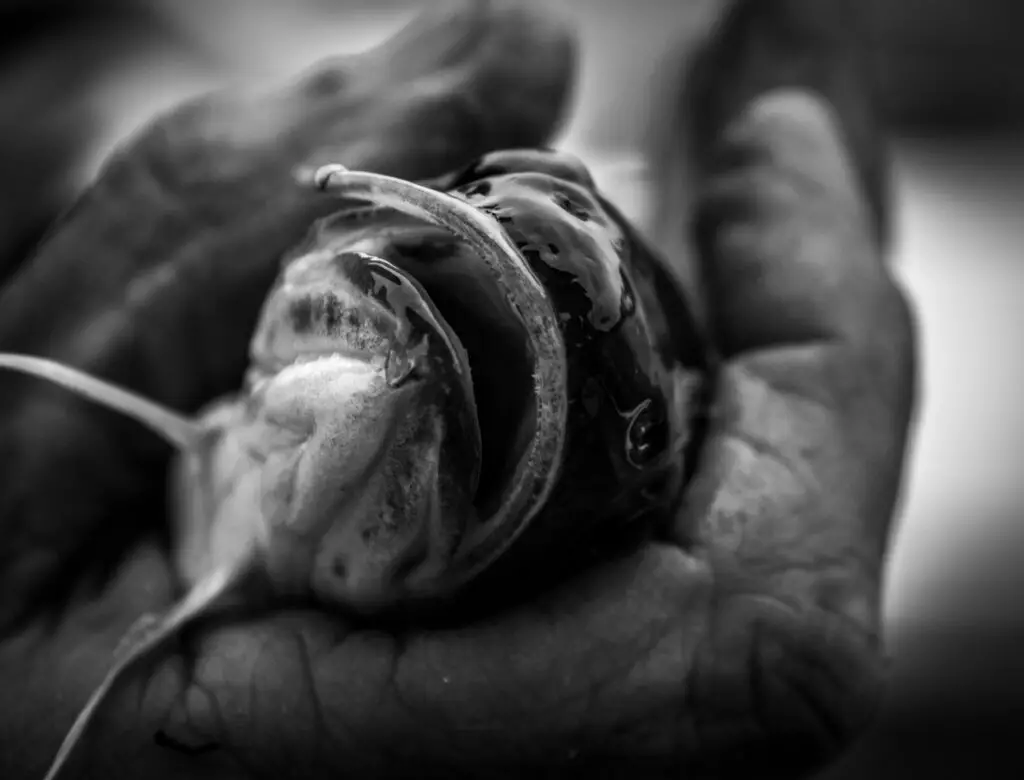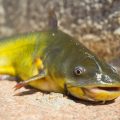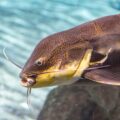A flathead catfish is also known as a mud catfish. Most people are under the impression that they are two distinct species because they frequently hear the two phrases; nonetheless, they refer to the same species. Anglers in Central America are familiar with the Mudcat because this is the region where it is most commonly seen. Mud catfish may not be the most well-known fish in the world, but they are some of the most interesting. Mud catfish might seem like a bizarre fish species, but they are delicious, and their good quality is earned.

Is a Mud Catfish a Fish?
Mud catfish can be found in many regions, including North America, Europe, Asia, and Africa. Mud catfishes are popular freshwater fish that are used as food by many people. One of the most distinguishing features of a mud catfish is its tail. A mud catfish’s tail is not finned like other types of catfish but is instead made up of several fleshy coils. The coils help the mud catfish swim better in muddy water and also help it hold on to objects while it hunts for food.
Where are Mud Catfish Found?
Mud cats live in deep pools in lakes, rivers, streams, canals, and reservoirs, especially ones with slow-moving, cloudy, or muddy water. They cover a wide area from the lower Great Lakes to the Mississippi River. Mud catfish can reach up to 2 feet in length and live up to 10 years. Mud catfish are found in many habitats across the United States, including slow-moving rivers, creeks, and reservoirs. Mud catfish can also be found in swamps, marshes, and other bodies of water with mud or silt bottoms.
What is their diet?
Mud catfish are carnivorous and eat a variety of small prey, such as worms, bugs, and other fish. In addition, they eat a variety of invertebrates, small fish, and occasionally other catfish.
Mud Catfish Appearance and Color
Mud catfish can vary in color from yellow, orange, or light brown to nearly black, with a pale stripe running down the center of their bodies. Mud catfish have smooth scales on their skin that give them a deceptive appearance when they move. The heads of the mud catfish are flatter than the heads of other species, but they have many of the same traits known to these fish.
Mud Catfish Nutrition facts
Mud catfish are a type of catfish that resides in muddy water. They are a popular fish to feed people because they are high in protein and low in fat. In addition, mud catfish have a mild flavor and can be cooked in many different ways.
What is the average adult Mud Catfish size?
A mud catfish is an ambush predator that lurks in rivers and streams, stalking its prey. They can grow up to 3-4 feet long and weigh up to 100 pounds.
How do you catch them?
Mud catfish can be caught in several ways. One of the most popular methods is to use live bait like worms or small fish. Another way is to use a net. Mud catfish can also be caught using a spearfishing method.
How Clean are Mud Catfish and How Should I Clean Them?
Mud catfish are one of the most popular varieties, and for a good reason. However, there are a few things to remember when cleaning mud catfish. The simple solution begins with a whole fish that has not been cut. Before you start, remember that a catfish has sharp pectoral fins. You don’t want to pierce your skin. It’s a good idea to wear a glove on the hand holding your catfish.
Here’s how to cleanly skin and gut mud catfish:
- Pin the fish’s pectoral fins with your left hand’s thumb, index, and middle fingers. This will keep the fish’s back up and its belly down.
- Make shallow cuts in the fish’s skin around its head and backbone from the dorsal fin to the adipose fin with a sharp knife.
- Grasp the skin behind the head with pliers (or catfish skin grippers) and pull it to the tail. On both sides, do this.
- Keeping the head in your left hand, use your right hand to grab the body behind the head. Bend the head down to break the backbone.
- Pull the head away from the fish by pulling it down and back toward the tail. This will get rid of the skin and the insides all at once.
- If you want to, cut off the fish’s tail and wash it in clean water.
Best Methods to Cook a Mud Catfish
Mud catfish, or flathead catfish, are one of the more popular types of fish worldwide, and for a good reason. They’re delicious, easy to cook, and relatively affordable. Here are a few tips for cooking mud catfish to ensure it comes out perfect every time.
- Preheat your oven to 350 degrees Fahrenheit. Mud catfish can be cooked whole or cut into smaller pieces, so choosing a size that comfortably fits your oven is best.
- Sprinkle your mud catfish with salt and pepper before tossing them onto a baking sheet. It’s important to season your fish lightly since its flavor will be masked by the sauce later on. Also, drizzle some olive oil over the fish before throwing them in the oven.
- After 10-12 minutes, remove your mud catfish from the oven and drizzle them with a homemade sauce made from apple cider vinegar, honey, soy sauce, garlic, and ginger. You can also throw in diced onion or celery if you have them around. Serve immediately!
Do Mud Catfish Bite People?
Mud catfish are one of the most popular freshwater fish in the United States. They are also one of the most misunderstood fish. Mud catfish are not aggressive by nature and typically do not bite humans. However, there have been a few cases where mud catfish have bitten people. In these cases, mud catfish usually attack because they feel threatened or are trying to defend their territory.
Conclusion
Mud catfish are a group of fish from the genus Silurus. They are known for their mud-dwelling habits, which give them their name. Mud catfish can be found throughout North America and South America, where they live in slow-moving streams or rivers.
Mud catfish have a few exciting features that set them apart from other fish, including their ability to breathe while submerged in mud and their diet, which consists almost entirely of worms and other small fish.











